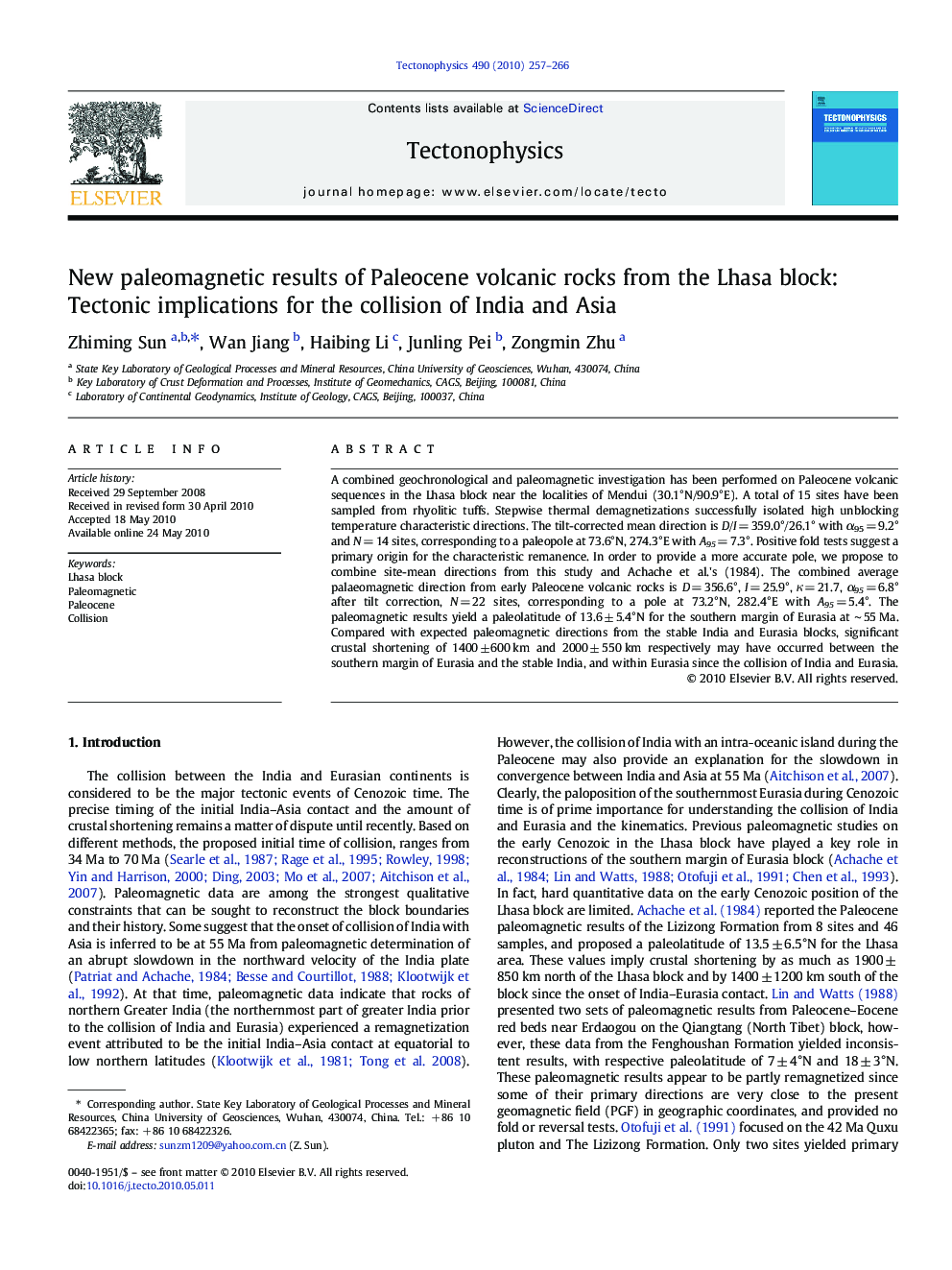| کد مقاله | کد نشریه | سال انتشار | مقاله انگلیسی | نسخه تمام متن |
|---|---|---|---|---|
| 4693457 | 1636864 | 2010 | 10 صفحه PDF | دانلود رایگان |

A combined geochronological and paleomagnetic investigation has been performed on Paleocene volcanic sequences in the Lhasa block near the localities of Mendui (30.1°N/90.9°E). A total of 15 sites have been sampled from rhyolitic tuffs. Stepwise thermal demagnetizations successfully isolated high unblocking temperature characteristic directions. The tilt-corrected mean direction is D/I = 359.0°/26.1° with α95 = 9.2° and N = 14 sites, corresponding to a paleopole at 73.6°N, 274.3°E with A95 = 7.3°. Positive fold tests suggest a primary origin for the characteristic remanence. In order to provide a more accurate pole, we propose to combine site-mean directions from this study and Achache et al.'s (1984). The combined average palaeomagnetic direction from early Paleocene volcanic rocks is D = 356.6°, I = 25.9°, κ = 21.7, α95 = 6.8° after tilt correction, N = 22 sites, corresponding to a pole at 73.2°N, 282.4°E with A95 = 5.4°. The paleomagnetic results yield a paleolatitude of 13.6 ± 5.4°N for the southern margin of Eurasia at ∼ 55 Ma. Compared with expected paleomagnetic directions from the stable India and Eurasia blocks, significant crustal shortening of 1400 ± 600 km and 2000 ± 550 km respectively may have occurred between the southern margin of Eurasia and the stable India, and within Eurasia since the collision of India and Eurasia.
Journal: Tectonophysics - Volume 490, Issues 3–4, 30 July 2010, Pages 257–266